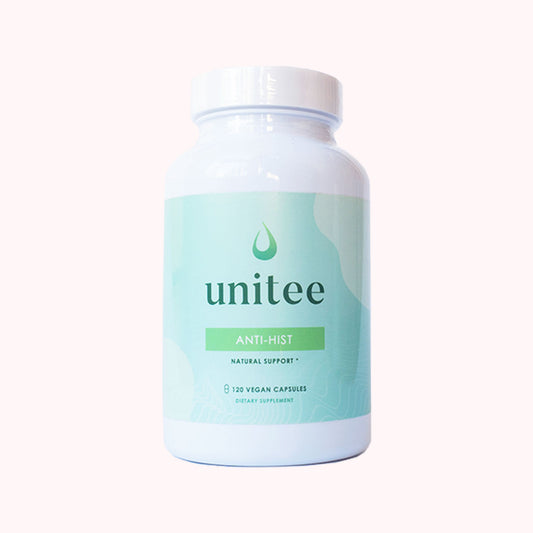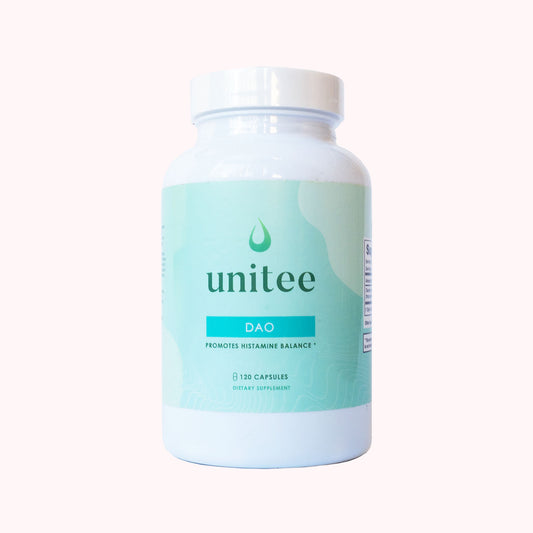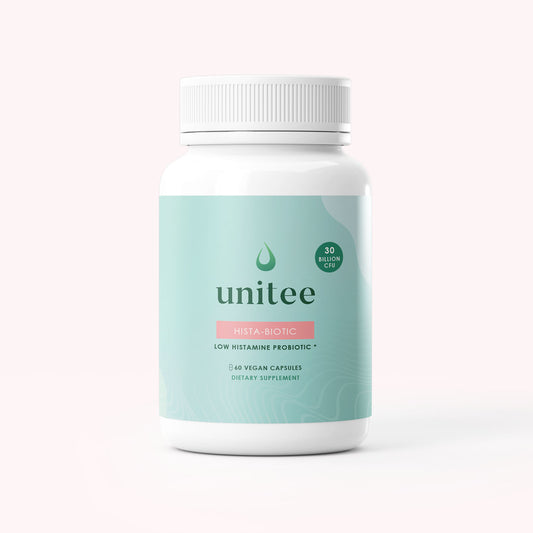Are you living with histamine intolerance?
Well today, you're going to find out why it's important to pay attention to and take care of your liver when suffering from histamine issues.
The liver really is a remarkable organ. It is responsible for a vast number of processes that your body carries out every day, including (1):
- Breaking down various compounds
- Rendering toxins harmless
- Supporting elimination of waste, hormones and drugs
- Metabolizing fats, proteins and carbohydrates
- Storing of vitamins and minerals
- Putting away excess sugar in the blood as glycogen
- Blood detoxification and purification
- Production of bile
- Managing cholesterol
- Creating necessary compounds for blood clotting
- Producing enzymes
Wow; is that a list or what!
It shows just how important optimal liver function is in our everyday health and sense of well-being. So today, we’re going to be talking about all of these liver functions but, in particular, how they may be related to histamine intolerance.
Histamine Intolerance and the Liver
Imagine your liver as a refrigerator. Your fridge, just like your liver, has many different functions that depend on what you require from it to preserve your food. Think crisping, freezing, cooling, humidity control and so on.
If you neatly pack your produce and perishables into their designated compartments and shelves in the fridge unit, you don’t have to think twice about what that food will come out looking like when you take it out to use.
Pack your fridge too tight without any thought to what goes where, in three weeks you may find some sour milk, a dehydrated carrot or a fuzzy green tomato in the back!
The same can happen to your liver. If it’s ‘packed’ too tight, or in a more medical sense, is under a higher load to perform, you may see some imbalances in its ability to function. That’s right, that green fuzzy tomato you’d see in the fridge becomes a mast cell and histamine problem for the liver (2).
Research looking into the mast cell reaction in a stagnant liver shows that, while mast cells are a normal part of a healthy liver, there can be quite a few more in a liver that is functioning at a less than optimal level. In fact, in some cases, doctors will test mast cell levels in the liver as a marker of chronic inflammation (3).
Let's not forget - mast cells are responsible for releasing histamine into the bloodstream when a threat is detected - so, more mast cells means more inflammation - and, more histamine.
An overburdened liver may not only increase mast cell reactions and increased histamine release, you may even see higher cholesterol levels and higher liver enzymes in your blood indicating that your liver is in need of support.
It’s important to recognize that all liver functions play a role in histamine intolerance. If liver function is stagnant, or the liver is under a heavy load of burden, you may not be eliminating waste as readily as you could or should be. Take heavy metals, mycotoxins from mold, or even excess estrogen metabolites, for example.
A liver that is not detoxifying well means it is not getting rid of some of these compounds that are most notorious for activating your immune system and mast cells, which means they may continue to circulate in your bloodstream and cause excessive release of histamine all throughout your body.
It is for this reason that you’re not only experiencing digestive issues relating to your histamine intolerance, but finding a bunch of other body-wide symptoms popping up or becoming exacerbated (4).
The good news is that, if you do support your liver and it can begin to function optimally again, you may see a dramatic improvement in your histamine intolerance, and your histamine symptoms overall.
How to Improve Liver Health with Histamine Intolerance
As you can imagine, supporting your liver is one of the most important steps in not only clearing your body of unwanted waste and toxins, but may also be crucial for overcoming histamine intolerance.
Here are 4 simple ways to help your liver out:
- Reduce your overall exposure to toxins. Toxins come from everywhere and the more aware of their sources, the more you’ll be able to control your own exposure. Choose organic foods where possible and remove processed and packaged foods from your diet. Choose natural personal hygiene products, cleaners and detergents. Avoid using plastic and eat fresh, whole foods as much as you can.
- Support your liver with food. Adding bitter foods such as dandelion greens or arugula into the diet may support detoxification through their ability to help stimulate the production of bile. Bile is produced by the liver, stored in the gallbladder and used as one of the major detoxification compounds in the gut. Bile needs stimulation to be released, and eating dandelion and arugula are a great way to get this process moving. Both are considered low histamine foods, which is also a consideration for what you should and shouldn't be eating. If you don't already have a low histamine foods list, click below to get our free foods list and diet guide!
- Destress. Stress affects the liver. Think about all of the cortisol that the liver needs to detoxify in addition to other chemicals from hormones, waste and food. Stored stress chemicals in the liver can hamper its ability to function, so the best thing to do is to reduce the burden of stress on the liver in the first place. Taking time to meditate, breathe, exercise and do things that bring you joy are a great way to relieve stress and support liver health.
- Use mast cell stabilizers. As mentioned above, mast cells release histamine and can be over-present or overactive in the liver if it is distressed. Using an all-natural mast cell stabilizer can help to reduce the amount of histamine release in order to prevent damage or symptoms that can occur from high levels of histamine and inflammation.
While we tend to focus most of our attention on reducing the histamine exposure we get from food, we still need to consider why we’re having histamine reactions in the first place.
Don’t forget to consider whether your hardest working organ needs some extra TLC; a little clean out to ensure that sour milk, dehydrated carrot or fuzzy green tomato isn’t hiding somewhere in the back and contributing to your symptoms.
References:
- Johns Hopkins Medicine. Health. Liver: Anatomy and Functions. 2021.
- Gittlen, S. D., E. S. Schulman, and W. C. Maddrey. Raised histamine concentrations in chronic cholestatic liver disease. Gut. Jan. 1990.
- Jarido, V., L. Kennedy, L. Hargrove, J. Demieville, J. Thomson, K. Stephenson, and H. Francis. The emerging role of mast cells in liver disease. American journal of physiology. Gastrointestinal and liver physiology. U.S. National Library of Medicine.
- Haars, A. Rolfs, G. Noe, U. W. Kolck, J. Homann, and G. J. Molderings. New aspects of liver abnormalities as part of the systemic mast cell activation syndrome. Liver International: official journal of the International Association for the Study of the Liver. U.S. National Library of Medicine, Feb. 2009.

Anita Tee
My name is Anita Tee. I'm a nutritional scientist specializing in histamine intolerance. I hold a Master of Science in Personalized Nutrition and a Bachelor of Science in Human Biology and Psychology.
For the past ten years, I have used my experience in nutritional and medical health sciences to create a scientifically backed, natural approach to healthcare that relies 100% on evidence-based research.
As I previously suffered from - and overcame - histamine intolerance, my focus is to increase recognition and expand the available resources and protocols available for resolving this particular disorder. To date, I have helped over 4,000 individuals fully resolve or better manage their histamine intolerance symptoms.







